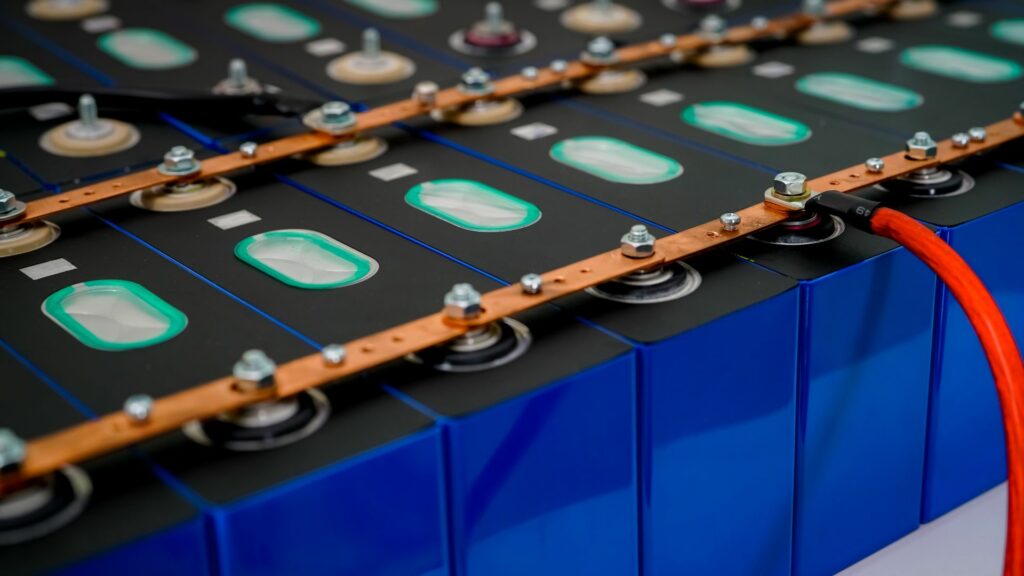Which is better Lithium Iron Phosphate (LFP) or Lithium Nickel Manganese Cobalt Oxide (NMC)?
When it comes to powering industrial forklifts, the choice of battery technology is a critical decision for energy managers. Two leading contenders in the market are Nickel Manganese Cobalt Oxide (NMC) and Lithium Iron Phosphate (LFP) batteries. This article provides a scientific and informative comparison of NMC and LFP batteries, examining their pros and cons to determine which is better suited for forklift applications.

The Case for NMC Batteries
Nickel Manganese Cobalt Oxide (NMC) batteries are known for their high energy density, which translates into longer usage times between charges. This is particularly beneficial for forklifts that are required to operate over extended periods without frequent recharging. NMC batteries are also lighter in weight compared to LFP batteries, which can potentially lead to improved efficiency and handling of the forklift.
However, the high energy density of NMC batteries comes with increased safety concerns. The risk of thermal runaway and potential fires is a significant drawback, especially in the industrial settings where forklifts operate. Additionally, the sourcing of cobalt, a key component in NMC batteries, raises environmental and ethical issues that cannot be overlooked.
NMC Batteries in Electric Cars
NMC batteries are known for their high energy density, which translates to longer usage between charges. This feature is particularly beneficial for electric vehicles (EVs) requiring extended range. For instance, Ford utilizes NMC battery cells in its electric vehicles, such as the Mustang Mach-E. However, NMC batteries can pose safety concerns due to the potential for thermal runaway, necessitating sophisticated thermal management systems. To mitigate these risks, manufacturers implement advanced Battery Management Systems (BMS), robust cell design, and regular maintenance protocols.
Safety Mitigation for NMC Batteries
To address the safety concerns associated with NMC batteries, several mitigation steps can be implemented. These include:
- Advanced Battery Management Systems (BMS): Employing sophisticated BMS to monitor and control cell temperatures, voltage, and current can prevent overcharging and thermal runaway.
- Thermal Management Solutions: Implementing active cooling systems or phase-change materials can help maintain optimal operating temperatures and reduce the risk of overheating.
- Fail-safes and Circuit Protection: Incorporating multi-level safety mechanisms such as fuses, circuit breakers, and disconnect switches can provide additional layers of protection against short circuits and overcurrent events.
- Robust Cell Design: Using cells with enhanced structural integrity and flame-retardant materials can help contain any potential failures within the battery pack.
- Regular Maintenance and Inspections: Conducting routine checks and maintenance can identify and address potential issues before they escalate into safety hazards.
By integrating these safety measures, the risks associated with NMC batteries can be significantly reduced, making them a more viable option for forklift operations that value high energy density and efficiency.
The Advantages of LFP Batteries

Lithium Iron Phosphate (LFP) batteries offer a robust safety profile due to their thermal and chemical stability. This makes them a safer choice for forklifts, as they are less prone to catching fire or exploding, even under stressful conditions. LFP batteries also boast a longer lifespan, capable of sustaining thousands of charge-discharge cycles before their capacity significantly degrades.
While LFP batteries have a lower energy density than NMC batteries, resulting in larger and heavier batteries for the same capacity, their operational cost efficiency over time is a compelling advantage. They typically require less maintenance than other battery types, such as lead-acid batteries, and do not need to be watered, reducing operational downtime.
Adoption of LFP Batteries in Electric Cars
LFP batteries offer a thermally and chemically stable alternative, with a lower risk of fire and explosion, making them a safer choice for industrial applications like forklifts. They also boast a longer cycle life, which is crucial for frequent charging and intensive use. In the automotive industry, Tesla has adopted LFP technology for its standard-range models, while Rivian plans to introduce LFP battery packs in its vehicles by early 2024. Daimler, the parent company of Mercedes-Benz, also plans to incorporate LFP cells in its electric models from 2024, targeting the lower price segment.
Operational Considerations
Energy managers must weigh the operational demands of their forklift fleet against the characteristics of each battery type. NMC batteries may be suitable for operations where high energy density and lighter weight are prioritized. In contrast, LFP batteries are ideal for applications where safety, longevity, and low maintenance are paramount.
Environmental considerations also play a role in the decision-making process. LFP batteries are more environmentally friendly, containing no hazardous materials and being more efficient in energy use. This aligns with the growing trend towards sustainability in the industry.
Conclusion
Both NMC and LFP batteries have their place in forklift applications, each with its own set of benefits and limitations. The choice between NMC and LFP batteries should be guided by the specific operational requirements, safety standards, and environmental policies of the organization. By carefully considering these factors, energy managers can select the battery technology that best aligns with their operational goals and sustainability commitments.





